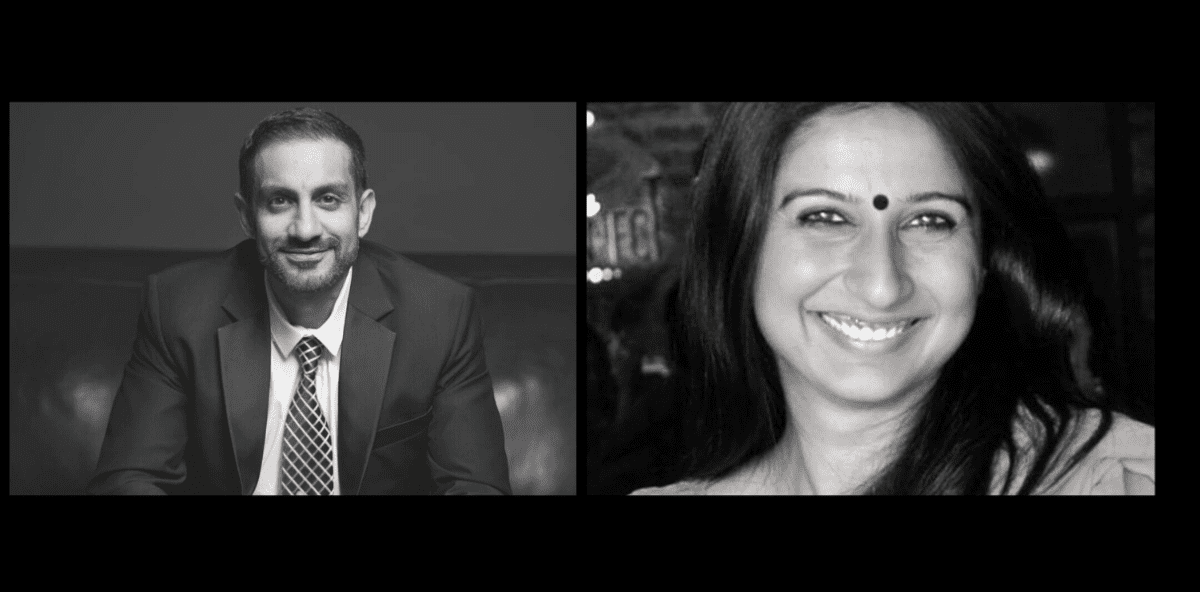There’s No Pay Disparity At GoDaddy, Says Nikhil Arora, VP & MD, GoDaddy India

Written By: Rituparna Chatterjee
Nikhil Arora, Vice President and Managing Director at domain registration and web hosting company GoDaddy, says he believes in hands-on leadership that cuts through high bureaucracy and delivers quality service to his clients. In a free-flowing conversation with Ungender Legal Advisory’s CEO and Founder, Pallavi Pareek, Nikhil talks about the several checks and balances GoDaddy India has put in place. The conversation discusses hiring, addressing internal bias, insight into how background checks are done at GoDaddy and how the company built its inclusion metrics.
What Is With The Name?
Pallavi: Let’s talk about the name, GoDaddy. I know that this decision was taken a long time ago, almost two years after the organization was registered under a different name. Tell us more.
Nikhil: I can share the history but I wasn’t around when this happened. This is something over 20 years old, but I think originally, it was registered as Jomax Technologies. And then the founder, Bob (Bob Parsons, the founder of GoDaddy in 1997) at that time was trying to get a catchy name, a name that would rhyme, from a marketing point of view.
(Believe it or not, another name that was chosen wasn’t available, adding a touch of irony to the registration of a domain registration company.)
Pallavi: I think it’s a catchy name. However has there been been any further thinking around this name?
Nikhil: As a company, we have made an active effort in the last few years, especially once we went public, to kind of change the perception, you know, if there was any around the name.
For example every time, there’s Mother’s Day, our logo and name changes to GoMommy on that day. Recognising importance and equality in some form or structure. Also as a company, we’ve been kind of rebranding the logo. Just a few months back, we had launched the rebranded logo that is meant to move in a direction of where the world’s moving — where every entrepreneur, every small business (associated with the company), has a heart and soul. We looked at colors. But nothing on the name front yet.
D&I At GoDaddy
Pallavi: How does GoDaddy look at D&I? Does the company have a particular philosophy and any goals?
Nikhil: As a company, we’ve been actively focused on looking at D&I. Within the broad field of D&I, I think there are issues of gender, race and religion.
A lot of organizations, in my experience. have had a very myopic view of it. (For some) it’s just a gender issue and actually that’s not right, because especially in our country, what caste you belong to also plays a role. Similarly what city you belong to, what accent you have all are dimensions of human personality that people use to discrimate againt.
The first thing to recognize around D&I is if platforms being created give opportunities to everyone? Is the same playing field? Second, is there a process that applies to everyone? Hiring is really subjective.
When people interview people, they take their biases to these interviews – biases based on how they grew up, where they grew up, what they grew up with. The best way to beat this is to ensure that that the interview process is properly defined, the second is to get multiple opinions on a candidate not just from a manager or a colleague or a senior. Once a candidate is selected, we want to make sure all women and men are at par. We don’t have any disparity in compensation in our company and this has been an active effort since 2016, when we hired an outside firm to do a diagnosis. Lastly, what kind of environment do we provide? Ask yourself – you hired the person, you got them to the process, you paid them equally, but are you setting them up for success?
We’ve also made an active effort over the last few years to hire influential women leaders, because it has a cascading effect. When you get somebody who’s influential and looked up to, then that leader will bring a change and also hire and bring in more leaders like herself.
Hands-On Leadership


Pallavi: Would you consider yourself a hands-on leader on the D&I front? Do you get progress reports on D&I work?
Nikhil: I always look at the ratio both from a gender, race and background point of view. If you have 90% people of a certain type working in a company, maybe that’s how the organization grew, or that’s how it just happened. Watever it is is, internally it gives you a perspective on the soul of the organization.
I make a conscious effort to get people with the best skills and competencies, but all things being equal, we want to move the needle on gender diversity. Secondly, I think also incorporating diversity into your meetings, as a day to day thing, is important. I’ll give you an example. For eg., the AI industry has always been very male-dominated. So when we are doing shoots (for clients) we have made an active effort to find women because it encourages many others.
D&I Measurement
Pallavi: You’ve told us about CSR activities that GoDaddy does, also how you focus on inclusion aspects for the customer – this sounds good. How do you actually measure D&I though?
Nikhil: So in terms of the metrics, one begins with the basics — what percentage of your workforce is women? How many have different races, religions? So today, you know, we’re about 30%.
Then the second metric is around pay equality, which is absolutely at par. In fact, we have about 32% leadership positions with women in our company which for a tech company, I think, is fairly good. We want to get to clearly much better than that.
The third metric, I would say, is the kind of people you hire. I personally believe that this is very much a human-driven process. As a leader, it is very important to set the narrative because it starts from there. If the leader doesn’t talk about it, a leader doesn’t embrace it, a leader doesn’t display commitment to these values, it will never happen in an organization. The scond part is hiring people who are going to be thinking the same way.
I interview everybody who comes into the organization, no matter what level it is, I personally try to know everybody in some form or structure because it gives you a sense of the thinking going on, what is working, what is not working.
Attracting Right Talent



Pallavi: From a learning perspective – how do you identify gaps in the hiring process particularly around not being able to attract the right kind of diversity in the talent pool?
Nikhil: Firstly, if you want to attract the right talent, I think your company’s image is vital and it is the leaders duty get that narrative out. For example, we made an active effort to sponsor and be part of women hackathon groups. We’ve been actively nominating mentors even from our teams, who are women, to go participate and talk about it at these events.
A year and a half ago we did a study with a company called Hello English and what we found is that in remote places women are actually adopting to working “online” faster than men. We also found out that this was the case because women largely, when lcoated in remote locations, worked from home and they needed to do something entrepreneurial urgently. When we figured that out, we said, ‘is our narrative i.e. is our marketing messaging resonating with them?’
In terms of processes we like to understand our people. Think about the value of reference checks. When I was getting recruited I was asked to four or five references. Companies can go talk to those four or five references and ask for ‘another four references of this?’, where this is a behavioural trait. This way a a pyramid of about 30 references is created and checked, a a pattern and theme can emerge about a person pretty quickly.
Accommodate Flexibility
Pallavi: What kind of specific provisions have been made internally keeping the needs of a diverse workforce in mind?
Nikhil: We, as an organization, have been very flexible. If a staff member lives far away, it is fine if they arrive by 11 or noon, 9 a.m. isn’t mandatory. We know they’re responsible people and they will do what they need to so there is no time-clock in that sense. We believe that we’ve hired the right people, and we believe they know what they need to do. In a woman’s case I’m also talking about commute factors in India pre COVID, can did and do all we can to make sure that women leave office at a time that they are not at risk or we have provisions to make sure they get home safe.
People Over Companies



Pallavi: The two ideas that you have brought out very explicitly is trust and care. However culture is a very fluid thing, it is not very easy to just pick one thing, change it and then everything will start working properly. What are the challenges that you have seen and experienced?
Nikhil: When I look at every role I’ve taken, first I always look at who I’m going to work for, rather than the company. What the leaders stand for, because companies could have stated values, but the questions is do the leaders live and breathe those values? That’s the advice I give to everybody when they’re selecting the company. Know who are the people you’re going to work for and work with.
Navigating Challenges
Nikhil: I think hiring is easy. Letting go of people is very hard. So I think one of the things we learn is you’ve got to be bold and you have to be fast especially when the fit is wrong. Second is, getting outside agencies to drive awareness, because sometimes an outsider brings in more objectivity than an inside person. They also know the blind spots. So I think engaging outside third parties who are credible and have good research and data to back their insights is useful.
Thirdly, use your woman leaders wherever you can. Nothing is more powerful than giving them autonomy and freedom to build that culture.
Positive Work Practices
Here’s a list of positive work practtices from GoDaddy, based on this interview!
☑ Constituting Women Technology Groups
☑ Hiring Influential Women Leaders
☑ Ensuring Equal Pay
☑ Incorporating Diversity Into Everyday Meetings
☑ Actively Hiring Women
☑ Partnering With Foundations Supporting Girls’ Education
☑ Womens’ Hackathon Groups
☑ Tailoring Marketing To Technology Adoption Rates (By Women)
☑ Properly Defining The Interview Process
☑ Multiple Reference Checks
Watch the full video on Ungender’s YouTube channel here.
Video Highlights
- 02:21: All About The Name
- 05:10: What Drives D&I
- 05:32: D&I At GoDaddy
- 09:58: A Safe Workplace Environment
- 10:56: A Hands-On Leader
- 15:46: D&I Metrics
- 22:07: Attracting The Right Talent
- 27:56: Helping People Accommodate With Flexibility
- 34:47: Choosing People First Before Choosing Companies
- 37:25: Challenges
- 50:36: Manels and Missed Opportunities
#Related MustReads:
Three Ways To Sustain Diversity and Inclusion at Your Workplace
How To Measure The Mental Health Status Of An Organisation?
How Not To Offend Your Colleagues At Work
About The Author: Rituparna Chatterjee is a journalist with close to two decades of experience in journalism, working across media platforms, and tracking ground-up stories of feminist movements, social inequalities, gaps in gender discourse, and communities. She currently oversees communications for Ungender Legal Advisory
Ungender Insights is the product of our learning from advisory work at Ungender. Our team specializes in advising workplaces on workplace diversity and inclusion. Write to us at contact@ungender.in to understand how we can partner with your organization to build a more inclusive workplace.
Read our insights about diversity, legal updates and industry knowledge on workplace inclusion at Ungender Insights. Visit our Blog.
Sign up to stay up-to-date with our free e-mail newsletter.
The above insights are a product of our learning from our advisory work at Ungender. Our Team specialises in advising workplaces on gender centric laws.
or email us at contact@ungender.in




